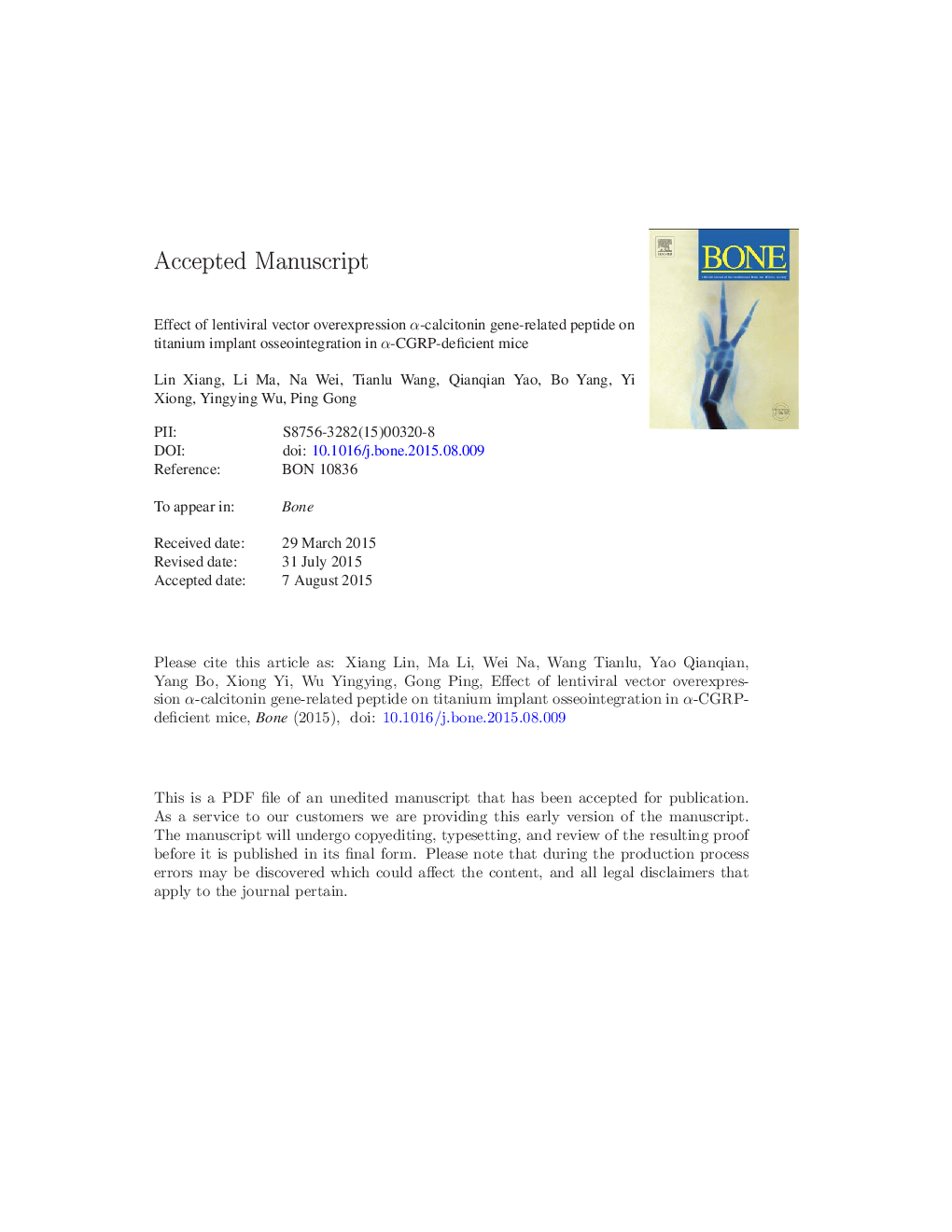| Article ID | Journal | Published Year | Pages | File Type |
|---|---|---|---|---|
| 5585378 | Bone | 2017 | 22 Pages |
Abstract
α-Calcitonin gene-related peptide (α-CGRP) plays a significant pathophysiological role in bone development, metabolism and remodeling around dental implants. However, the half-life of α-CGRP in plasma is only 10 min, which affects its long-time application and an alternative approach should be developed to deliver α-CGRP over long periods of time. The aim of this study is to investigate whether a lentiviral α-CGRP overexpression vector system can express this target-gene longer at peri-implant sites, thus enhancing osseointegration. Animals were divided to the following groups: α-CGRPâ/â, α-CGRPâ/â with lentivirus transfection and α-CGRP+/+ mice. IVIS Spectrum imaging observations identified the successful transfection of α-CGRP around experimental implants inserted in the femurs at 5 days after injection. Histomorphometrical analysis indicated an increase of bone-implant contact (BIC) at 1-month healing in the transfection group. Moreover, real-time RT-PCR and western blot results of bone-related markers Runx2, Osterix, and BSP levels elevated in lentivirus-transfected mice at 21 days, compared to the untreated α-CGRPâ/â mice. There was no significant difference between the transfection group and α-CGRP+/+ group. Further α-CGRP protein detection confirmed the persistent expression of this transgene at 21 days post-operatively. These results suggest that this lentiviral vector system expresses α-CGRP in an effective, appropriate and sustained manner, which might have a potential application in enhancing titanium implant osseointegration.
Related Topics
Life Sciences
Biochemistry, Genetics and Molecular Biology
Developmental Biology
Authors
Lin Xiang, Li Ma, Na Wei, Tianlu Wang, Qianqian Yao, Bo Yang, Yi Xiong, Yingying Wu, Ping Gong,
